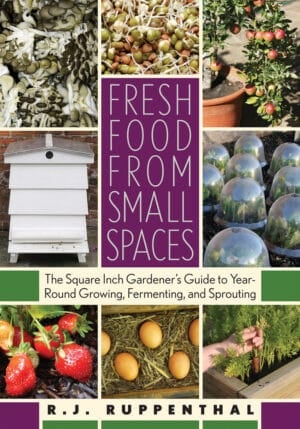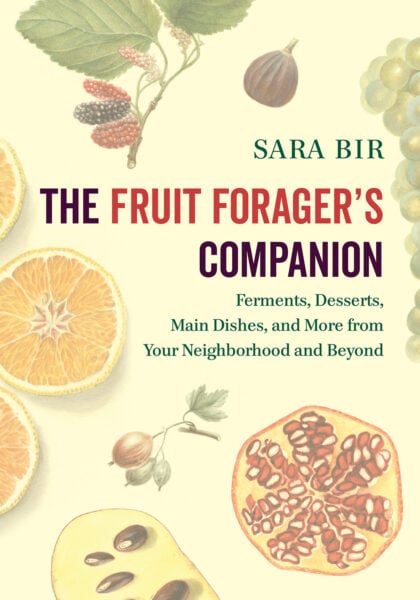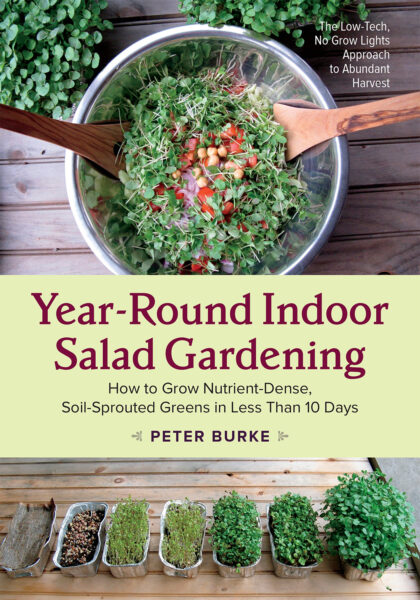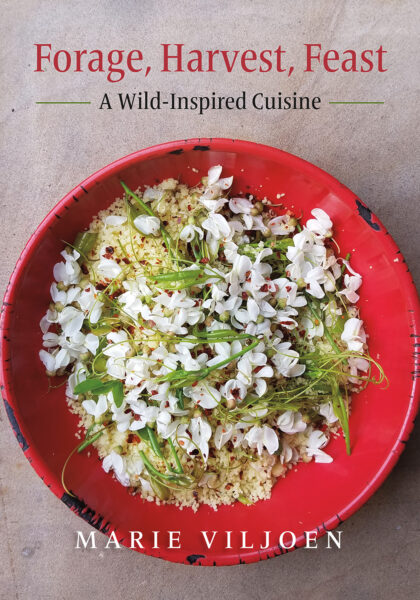Grow Berries in Your Low-Light Urban Space
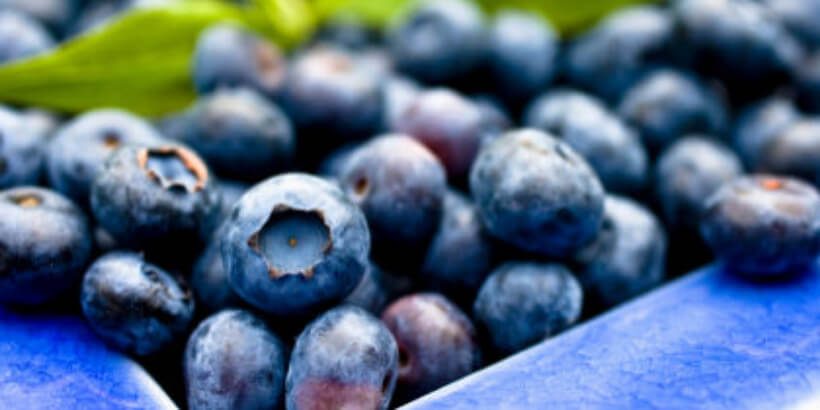
The following is an excerpt from Fresh Food from Small Spaces by R. J. Ruppenthal. It has been adapted for the Web.
A central problem for many of us who garden in the city is a lack of light. This is covered extensively in the vegetable chapters. I mention it again here only to note the problem that shade poses for growing fruit. In short, most fruit trees require nearly a full day of sunlight in order to set and ripen fruit. So what can you do if your only available growing space gets only a few hours of light per day? Here I have two pieces of advice: First, if you are gardening in the southern United States or anywhere with hot weather, then this small bit of sun might be enough, since some trees prefer partial shade in hot summers and can even get burned in full sun. So be courageous and try planting something there. Second, there are a few berries that are proven to be good shade producers, so you can try one of these even in partial shade conditions. In their natural environment, as lower-growing shrubs in woodland areas, many berry plants are used to partial shade. Blackberries, for example, can set nearly a full crop on a few hours of sunlight per day, and other, less common types of berries are solid shade producers as well.
Huckleberries, a wild predecessor of domesticated blueberries, grow throughout much of North America. You have probably come across wild berries while hiking at some point in your life, yet although you and I may not feel safe trying them in the wild, huckleberries and other wild berries have long been staples for Native American tribes, as well as forage for bears, birds, and other wildlife. On the West Coast, we have a several native varieties of huckleberry, including a variety called evergreen huckleberry, which grows well in the shade. It is one of the rare berries that actually grows better in the shade than in the sun, still produces delicious fruit, and is not particular about soil type. In other parts of the country, you may want to investigate whether you have native huckleberries that can grow in shady conditions.
Gardeners in the Midwest, Rocky Mountains, Northeast, and Northwest have other berry options as well. These include currants and the closely related gooseberries. Currants are the better known of the two, with several native varieties growing wild and a long history of cultivation in Europe and the Eastern states. Gooseberries, which are easy to grow and just as delicious, can be planted under fruit trees and still bear successfully in less than full sunlight. According to the University of Minnesota Extension, both currant and gooseberry plants can perform very well in as little as a half day of sunlight. Both grow on canes, much like blackberries and raspberries, but are not often trellised (though they can be). The canes can be pruned as necessary for smaller space gardens. You can order these plants, either bareroot or potted, from many local and mail-order nurseries. Because black currants were once known as a host for the disease white pine blister rust, some Northeastern and Midwestern states outlawed them. Most of these states now permit disease-resistant varieties; check with your nursery or a reputable mail-order supplier for some suggestions.
Other low-growing berries are also worth trying, since their natural habitats are partially shady. Anything that grows as a groundcover (alpine strawberry, cranberry, bearberry) or low-growing shrub (lingonberry, lowbush blueberry, creeping Taiwan raspberry) may bear successfully in limited sunlight. If you have a patch of yard that is mainly shady and space enough for a larger shrub, consider an elderberry. These beautiful bushes thrive in partial shade to produce healthful fruit that makes delicious wine and preserves. Hidden Springs Nursery, Raintree Nursery, and One Green World have an especially wide selection of unusual and edible berries.
Recommended Reads
Recent Articles
Garden strawberries are excellent for both covering the ground and for growing fruit. If you’re planning out a forest garden, or are just looking for a plant to use as ground cover, strawberries are a great option. The following is an excerpt from The Home-Scale Forest Garden by Dani Baker. It has been adapted for…
Read MoreAsparagus is a delicious vegetable with a layered history. How did this aspiring spear make its way from growing in the wild to appearing on our plates? The following is an excerpt from the The Seed Detective by Adam Alexander. It has been adapted for the web. “Nature gives us the key to every secret…
Read MoreInterested in growing trees? Here are some tips on successfully planting, transplanting, and pruning trees to create a flourishing forest garden! The following is an excerpt from The Home-Scale Forest Garden by Dani Baker. It has been adapted for the web. Planting Potted Trees and Shrubs If you order potted trees, check with your supplier to…
Read MoreChances are, you’ve seen cattails growing on the edge of your local lake or stream at least once or twice. Instead of just passing these plants, try foraging for and cooking them to create delicious seasonal dishes! The following excerpt is from The New Wildcrafted Cuisine by Pascal Baudar. It has been adapted for the…
Read MoreWith the right strategies and practices, composting on a small farm is surprisingly easy and inexpensive. Just follow these steps for making compost, and your farm will be thriving in no time! The following excerpt is from The Lean Farm Guide to Growing Vegetables by Ben Hartman. It has been adapted for the web. (All photographs by Ben…
Read More

